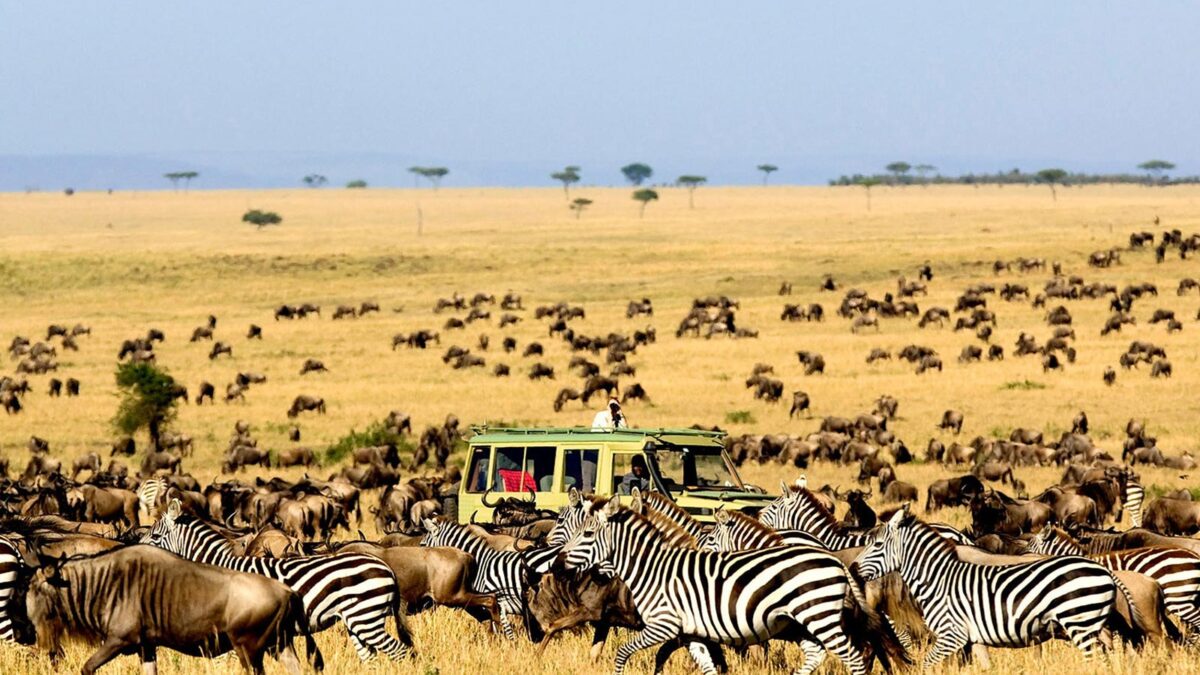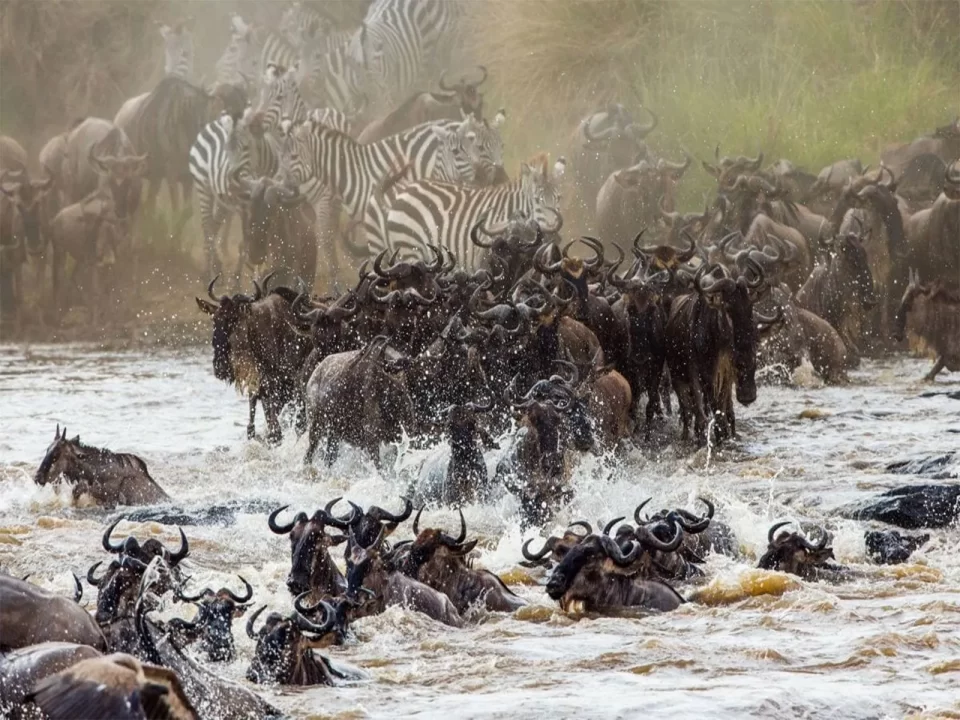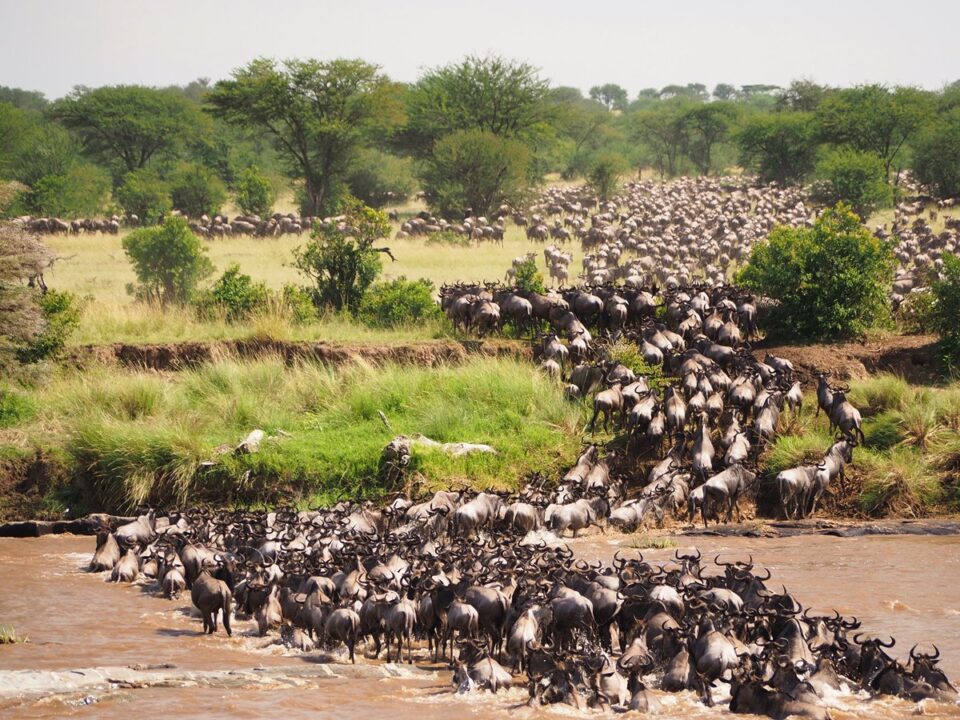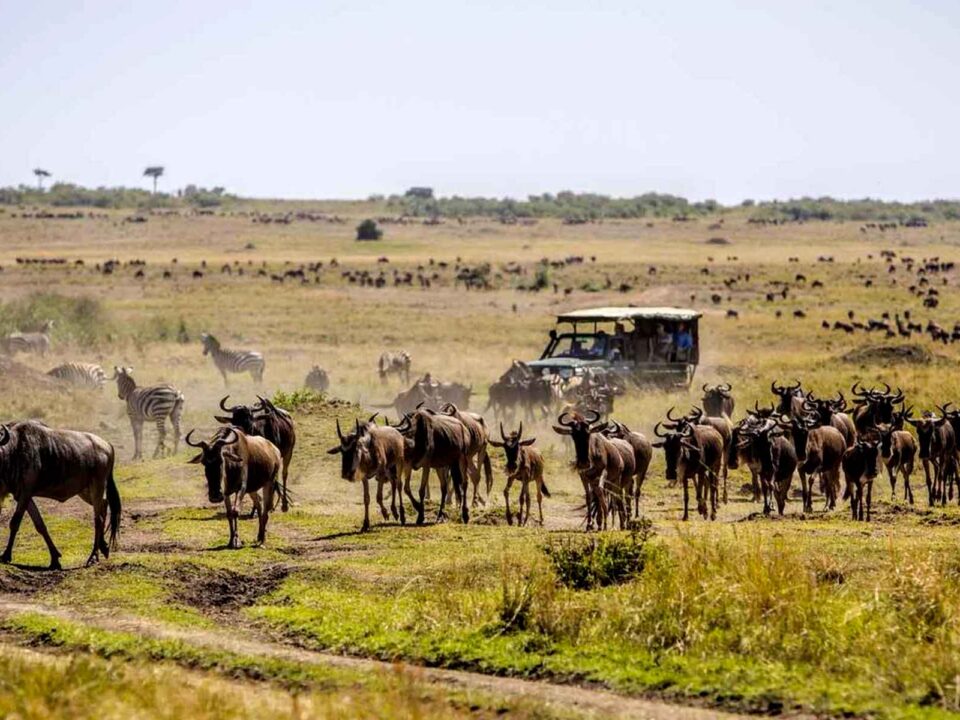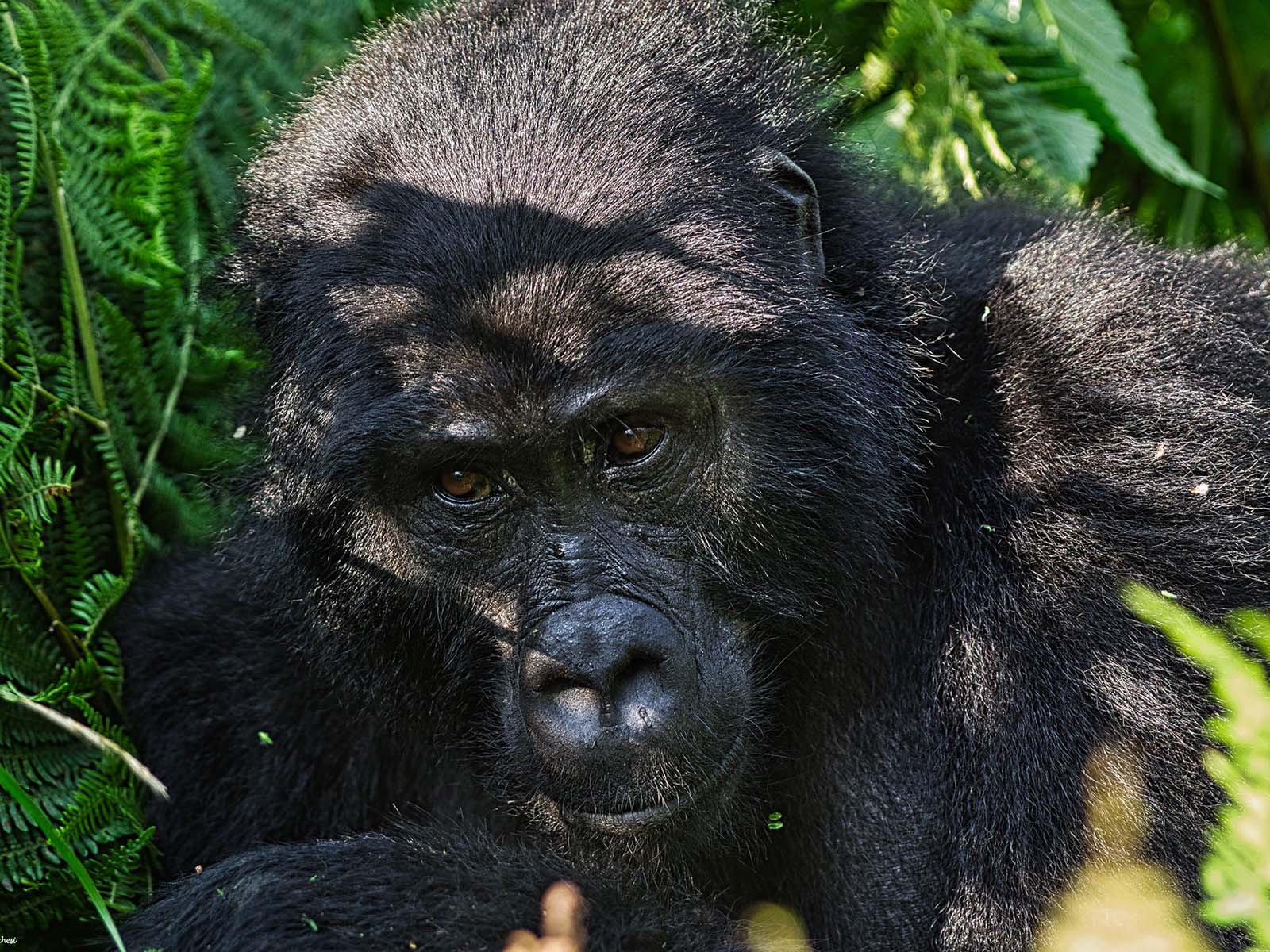
Fly in Buhoma Gorilla Tracking Safaris
November 30, 2023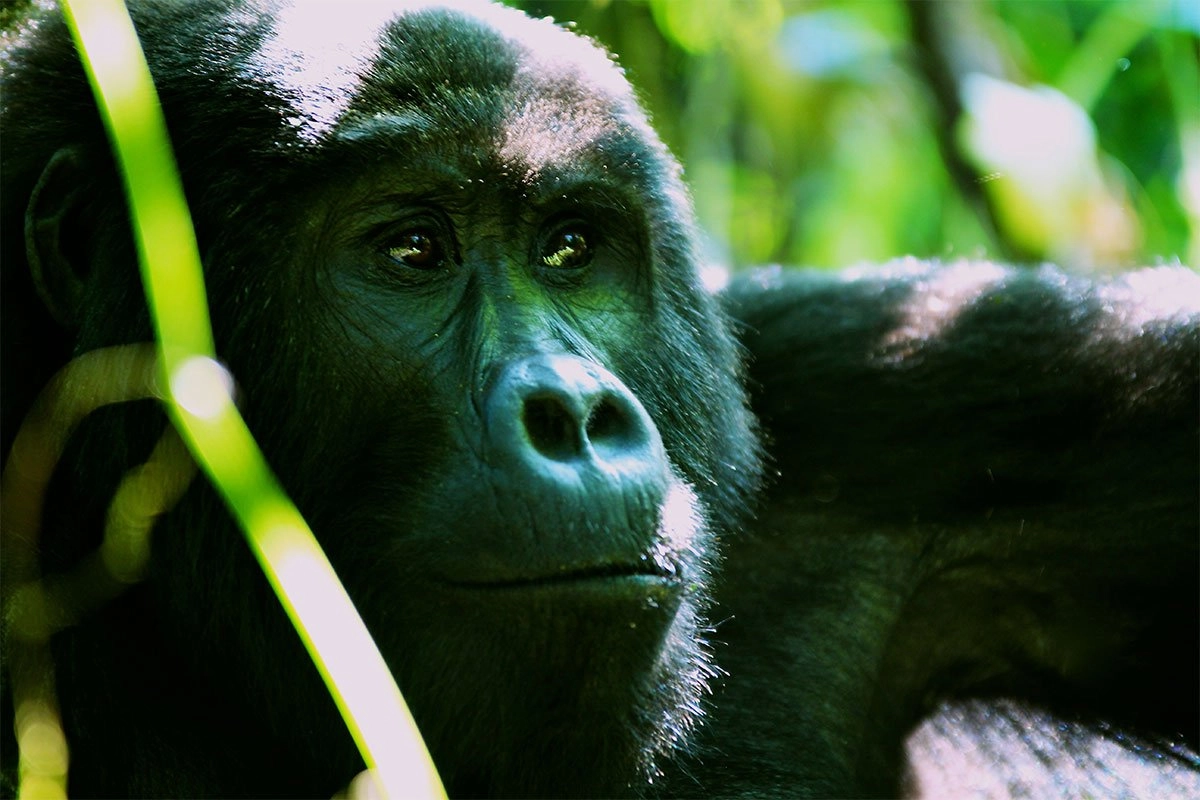
Flying Buhoma Mountain Gorilla Safaris
November 30, 2023Unlock the Wonders of Wildebeest Migration in January Safari – Serengeti National Park, Tanzania
January Wildebeest Migration Pattern: A Spectacle Unveiled
Embark on an extraordinary journey through Tanzania’s Serengeti National Park with our January wildebeest migration safari. The herds are on the move, gracefully transitioning from the north-east region back down south, captivating the landscapes of the Southern Serengeti, Lake Ndutu, and Ngorongoro Conservation Area. This mesmerizing migration unfolds as the herds explore the vast, unfenced terrain, seeking lush grazing areas with fresh grass. It’s essential to note that the migration comprises up to two million wildebeest, zebras, and antelopes, forming mega-herds of thousands or hundreds of individuals at a time.
Southern Serengeti’s Bounty: A Haven for Calving Season
The Southern Serengeti emerges as a focal point during the calving season, extending until March. Witness the arrival of wobbly, adorable babies, alongside heartwrenching moments as predators seize opportunities. This region offers prolific predator action, with lions, brown hyenas, leopards, and wild dogs preying on vulnerable calves.
Stretching from the Central Serengeti to the Ngorongoro Conservation Area and Maswa Game Reserve, the Southern Serengeti boasts grassy plains adorned with granite kopjes. It stands as one of the prime locations to witness the Great Migration spectacle. Between December and May, observe the colossal herds of wildebeest, zebras, and gazelles arriving for calving. In February, the Southern Serengeti transforms into a stage for thousands of baby wildebeest taking their first steps, drawing hungry predators like lions, cheetahs, and hyenas.
Safari Highlights in Southern Serengeti, Tanzania
A safari in the Southern Serengeti promises daily game drives showcasing the Great Migration’s unfolding drama. Whether witnessing the birth and first steps of baby wildebeest on the lush plains or observing vast herds on the move towards the Masai Mara, this region encapsulates the full circle of the Great Migration. January marks the herds’ settling into the short grass plains around Lake Ndutu, initiating calving amid the fertile soil and nutrient-rich grasses. The southern Serengeti, extending from Maswa to Gol, Kakesio, and the Moru Kopjes, becomes a vibrant canvas of wildlife activity, with localized rainfall influencing their movement.
Summary – January Safari Extravaganza
Enjoy excellent cat viewing, featuring cheetahs, lions, and leopards, amidst large herds of the Great Migration spanning the southern Serengeti and northern Ngorongoro Conservation Area. January stands out as a slightly quieter travel period compared to February or Christmas, marking a peak calving month.
Additionally, Trek Africa Expeditions offers assistance in arranging gorilla trekking safaris to Rwanda and Uganda. With guaranteed gorilla trekking permits for both countries, consider adding this unique experience to complement your wildlife safari in Serengeti National Park, Tanzania. Contact our team of experts at Trek Africa Expeditions for a once-in-a-lifetime safari experience in Africa.

